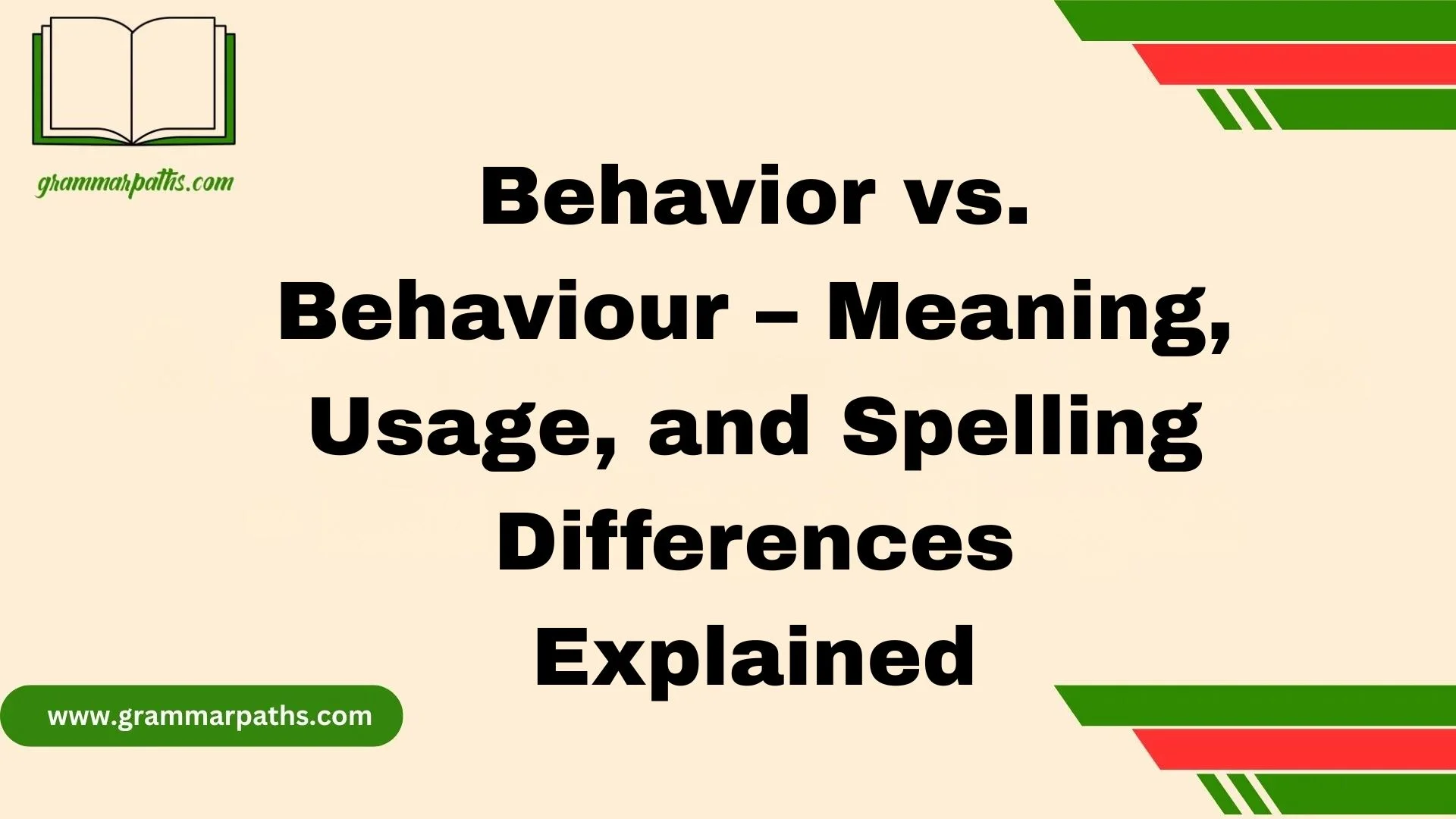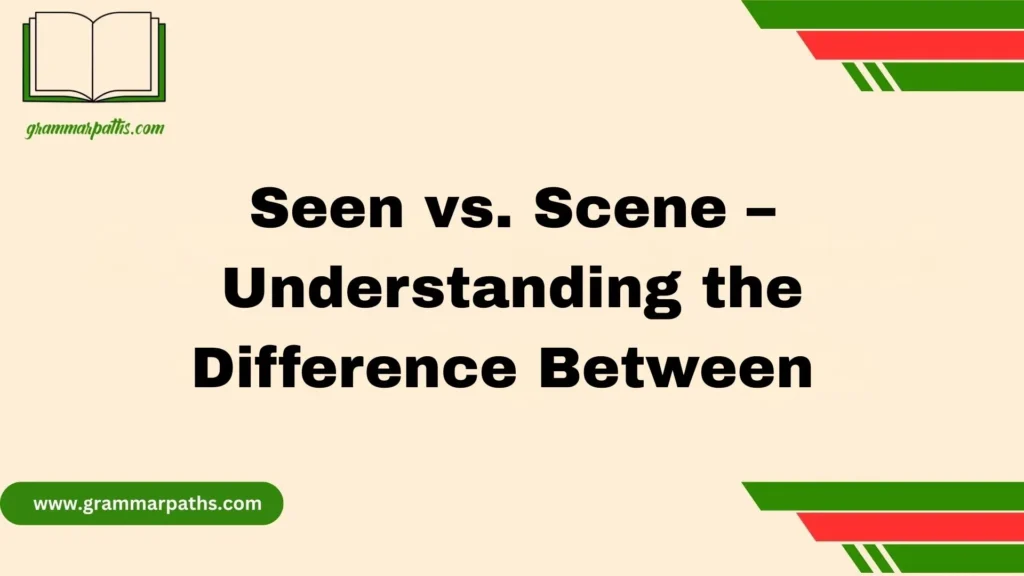As a writer who often edits content for an international company, I often wonder why so many words like behavior and behaviour differ only in spelling yet carry the same meaning. The difference mainly comes down to geography: American English prefers behavior, while British English uses behaviour. Understanding these subtle distinctions is crucial for clear communication, especially when writing for diverse audiences. Choosing the correct form depends not only on regional rules but also on the context, reader, and overall style you want to maintain.
From my experience as a language editor, having a guide with practical tips helps avoid common pitfalls. Paying attention to variation, themes, history, and culture makes your writing smoother and reduces confusion. English writers benefit from this understanding, ensuring their content reflects clarity, correct forms, and a globally-aware style. Subtle distinctions like these, though common, can impact how readers perceive your work, so using practical guides and tips enhances your writing and builds broader understanding of behavior versus behaviour.
The Core Difference: Behavior vs. Behaviour
At its simplest:
- Behavior → American English spelling
- Behaviour → British English spelling
Both terms mean the same thing: the way a person, animal, or object acts in response to a situation. For example:
- American English: Her behavior in class was exemplary.
- British English: Her behaviour in class was exemplary.
The meaning doesn’t change, but spelling signals the regional standard you’re following.
The History Behind the Spelling Difference
The difference traces back to Noah Webster, an American lexicographer who reformed English spelling in the early 19th century. His aim was to simplify English for Americans. He removed letters like “u” from words such as colour → color and behaviour → behavior.
Before Webster, British and American English were nearly identical. In Britain, traditional spelling retained the -our endings, while the US opted for -or. These changes were reinforced by dictionaries and the printing industry, standardizing spelling over time.
Fun Fact: Webster’s reforms were also political. He believed American English should reflect a new national identity separate from Britain.
Where Each Spelling is Used
| Spelling | Region | Notes |
| Behavior | United States, Philippines, parts of Latin America | Standard in American academic and professional writing |
| Behaviour | UK, Canada, Australia, New Zealand, South Africa, India | Standard in British English, Commonwealth countries, and international publications |
Even in Canada, which often mixes British and American conventions, behaviour is the preferred spelling in formal contexts.
Common Mistakes Learners Make
Many writers fall into predictable traps:
- Mixing spellings: Writing behavior in one paragraph and behaviour in another
- Audience confusion: Using behaviour in US-based professional papers may seem incorrect
- Assuming one spelling is superior: Neither is “better”—it’s about context and consistency
A quick trick: pick the spelling that aligns with your target audience and stick with it throughout the document.
How to Choose the Right Spelling for Your Writing
When selecting between behavior and behaviour, consider:
- Audience: US readers → behavior | UK/Commonwealth readers → behaviour
- Style guides: APA, MLA, Chicago, Oxford, and Cambridge often specify spelling rules
- Consistency: Never switch spellings mid-document; it can appear unprofessional
Example:
- APA (American Psychological Association) → behavior
- Oxford Style Guide → behaviour
Choosing the correct spelling ensures clarity, authority, and credibility in your writing.
Related Words and Variations
The -our vs. -or pattern affects many English words. Knowing these variations can prevent mistakes:
| American English | British English | Context/Use |
| Behavioral | Behavioural | Psychology, medicine, research papers |
| Color | Colour | Design, art, general writing |
| Favor | Favour | Formal letters, requests |
| Honor | Honour | Academic awards, formal writing |
Behavioral vs. Behavioural is especially important in professional fields:
- US research papers: behavioral study
- UK research papers: behavioural study
Using the correct form shows you understand regional conventions.
Practical Tips for Remembering the Difference
Keeping the distinction straight doesn’t have to be hard. Here are some proven tips:
- Mnemonic: “US drops the ‘u’.”
- Memory trick: Think of behavior = America, behaviour = Britain
- Proofreading tip: Scan for -or/-our endings in your text before submission
- Audience check: Identify your readers first, then standardize spelling
Consistency is easier when you adopt these strategies at the start of writing rather than editing afterward.
Tools and Resources for Avoiding Spelling Errors
Modern writing tools make it easier than ever to stay consistent. Consider these:
- Spell checkers: Grammarly, Microsoft Word, Google Docs
- Dictionaries: Merriam-Webster for American English | Oxford English Dictionary for British English
- Browser extensions: Ginger, ProWritingAid, Hemingway Editor
These resources help catch inconsistent spelling, correct errors, and reinforce the correct usage in professional contexts.
Why Spelling Consistency Matters
Spelling isn’t just about correctness; it influences perception.
- Professional credibility: Inconsistent spelling can undermine authority
- Academic standards: Journals and institutions expect adherence to style guides
- Global communication: Misaligned spelling can confuse international audiences
For example, a brand using “favor” in some materials and “favour” in others may seem careless. Maintaining consistency builds trust and professionalism.
Case Studies: Real-World Examples of Spelling Choices
Example 1 – Academic Papers
A US-based psychology journal requires behavioral interventions. Submitting a paper with behavioural interventions may delay review or require editing.
Example 2 – Corporate Branding
A UK company launching in the US should change behavioural programs to behavioral programs in marketing materials. This avoids alienating American customers.
Example 3 – Social Media Content
An international audience reading mixed spelling may perceive the brand as careless. Sticking to one standard keeps messaging clear and professional.
Conclusion
Understanding the difference between behavior and behaviour is more than just a spelling matter. It reflects geography, culture, and context, influencing how your writing is perceived by audiences. By following regional rules, using a guide with tips, and being aware of common pitfalls, writers can create content that is clear, professional, and globally understandable. Paying attention to subtle distinctions, style, and proper forms ensures communication remains precise and smooth, whether in American or British English.
FAQs
Q1: What is the main difference between behavior and behaviour?
The primary difference lies in spelling. American English uses behavior, while British English uses behaviour. Both words have the same meaning.
Q2: Does the choice of behavior or behaviour affect clarity?
Yes, using the correct form according to regional rules improves clarity and reduces confusion for your readers.
Q3: Are there any practical tips to avoid mistakes?
Yes, follow a guide, pay attention to context, and use tips to avoid common pitfalls in writing for different audiences.
Q4: Does this distinction affect professional writing globally?
Absolutely. Understanding subtle distinctions and maintaining proper style ensures your content is smooth, professional, and globally acceptable.
Q5: Is behavior vs. behaviour important for language editors?
Yes, editors must ensure writing follows regional rules and maintains clarity, style, and proper forms for different audiences.

Mia Rose is the passionate writer and founder of GrammarPaths.com, a resource dedicated to helping learners master English grammar, idioms, and writing skills with ease. With a deep love for language and years of experience in teaching and content creation, Mia simplifies complex grammar rules into clear, practical guides that readers can instantly apply.












